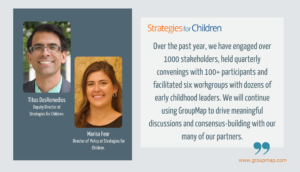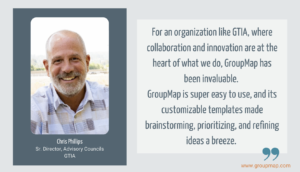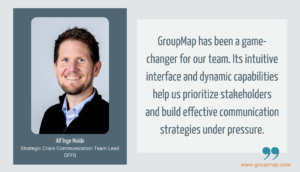
How GroupMap is being used in Classrooms to facilitate student learning.
The following are examples of how educators are effectively engaging their students in group discussion, collaborative learning, and speeding up the feedback process for their students. These ideas were presented at the WAND teaching and learning conference held at Curtin University and offer some wonderful examples of how teachers can employ innovative practices in delivering their curriculum.
Facilitating online discussions with pre-service teachers
Paul from the School of Education presented on how he used Edward De Bono’s “Six Thinking Hats” format to brainstorm inclusive practices for students.
The learning outcome was for students to explore the idea of having a student from a different country joining a classroom. Rather than one specific country, however, he asked participants to imagine that in the future, Aliens had been discovered from Mars and that a Martian was joining the classroom. Using the different perspectives of Edward De Bono’s “Six Thinking Hats”, pre-service teachers could then explore and list a wide range of issues that needed to be considered within the school environment. Given that this was also an online class, it meant that everyone had the opportunity to participate in the process and perspectives from a wide range of participants could be inputted.
Based on the outputs it looks like they had a great session, generating ideas and solutions to cross-cultural bridges. It’s no wonder that Paul received positive feedback from students like “This is the first time in my online course that I actually feel like a student that could contribute. All my courses should be like this.”

What could you try?
- Using the 6 thinking hats approach so that people are encouraged to think differently about the same situation.
- Integrating GroupMap into your own LMS (Blackboard was used in this case) to make the experience more seamless.
- Augmenting your online course with a collaborative online brainstorming tool.
Smarter Team Planning
Bhadra, (Manager-Curtin Library Learning Services) went through the way she and her team had used GroupMap for unit planning. Instead of gathering up all the sticky notes or madly writing down notes during meetings, each person added their ideas and comments to a GroupMap over the course of a month. Many hands make light work, and by the end of the process, the team had plenty of useful information in one, easily accessible place. The best thing about it? Everyone was able to have their say and see what others were talking about (without the hassle of scheduling around a dozen people’s busy lives). Less early morning meetings equal more sleep for everyone.

What could you try?
- Running your online brainstorming sessions prior to your meeting to allow people more think time.
- Speeding up your meetings by having people add their thoughts to a key topic beforehand.
- Capturing thinking as you plan so you have a written record and evidence of the planning process.
Deeper Discussion through a compare and contrast exercise
Naggamal, a Clinical and Professional fellow, entertained us with her use of GroupMap in the more traditional classroom environment. Naggamal used GroupMap to look at the pros and cons of different medical radiation equipment with her students. Students were asked to expand their thinking by branching out from a given set of medical radiation tools. By comparing and contrasting, students can better consolidate their understanding whilst applying critical thinking to the diagnostic methods. With something as technical as this, she said it was great to see students able to explore topics with no one fixed answer. She also has the ability to comment and give feedback to the conversation as it developed.

What can you try?
- Provide feedback in real-time to groups as they present ideas.
- Use GroupMap as a formative assessment tool to evaluate student understanding of key topics.
- Facilitate a class discussion based on the overall output by the students.



